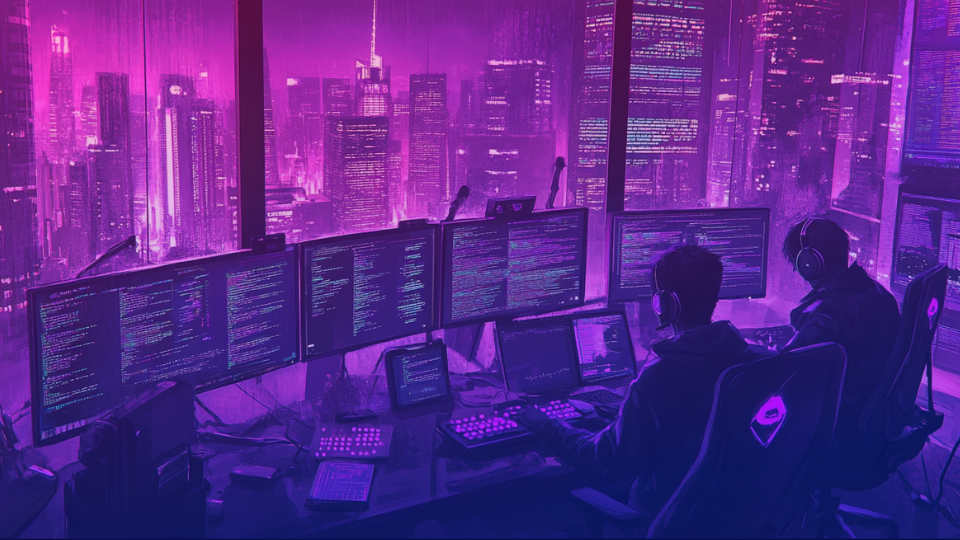Strategize or Compromise: A CISO’s Guide to Thriving in Finance

In the finance sector, CISOs are evolving from tech experts to strategic leaders. This shift responds to a 35% rise in ransomware attacks in 2022, with data breaches costing an average of USD 5.97 million. It's a clear signal: the role of CISOs now demands a blend of technical knowledge and strategic insight.
Consider the CISOs at JPMorgan Chase and Bank of America. Their work in cloud security and strategic cybersecurity discussions showcases the new direction of CISO responsibilities. These leaders are not just defending against threats but are also integral to business strategy and navigating regulatory landscapes.
Historical cyber incidents, like the Equifax breach, have been pivotal. They spurred stricter data protection regulations and redefined CISO roles towards strategic business alignment. The emergence of RaaS and DDoS attacks further highlights the need for CISOs to adopt a business-centric cybersecurity approach.
This evolution from backroom technical oversight to front-line strategic influence is crucial. Today's CISOs are steering their organizations through complex cyber threats and regulatory challenges, making them indispensable to the business strategy and resilience of financial institutions.
Emerging leadership skills:
Integrating frameworks like NIST into organizational practices highlights the move towards balancing security with operational needs. This balance is critical, focusing on risk assessment to guide cybersecurity efforts effectively.
Regulatory compliance is a key area where CISOs are demonstrating their prowess. Navigating the intricacies of GDPR, CCPA, and other regulations demands a proactive approach. It's about transforming regulatory requirements into actionable, auditable policies that align with business agility.
The embrace of AI and ML technologies marks a significant step forward, automating security measures and weaving them into the very fabric of technology deployment. This shift towards innovation in security underscores the importance of staying ahead in a fast-evolving digital environment.
Take Jason Witty at JPMorgan Chase, for example. His approach to cybersecurity, emphasizing "controls as code" and the integration of cutting-edge software practices, showcases the strategic depth now required of CISOs. These responsibilities extend beyond traditional IT security, demanding a nuanced understanding of business strategy and effective communication with upper management.
Critical too is the capacity to navigate supply chain complexities and extend cybersecurity measures beyond conventional networks. This broader view challenges CISOs to manage risks in more innovative ways and fosters a culture of collaboration and shared responsibility for security across the enterprise.
Navigating the challenges.
The year 2023 marked a significant uptick in cloud intrusions, with a 75% increase, and a surge in identity-based attacks using generative AI. This evolution pushes the battleground towards cloud environments and identity management, fueled by remote work and digital initiatives.
The CrowdStrike 2024 Global Threat Report sheds light on this shift, noting a record eCrime breakout time of just 2 minutes and 7 seconds. The presence of 34 newly named adversaries signals the rapid evolution and sophistication of threats, emphasizing the need for swift detection and response.
Marking the need for an integration of both technicality and strategy for tomorrow’s CISO.
Here are some factors you can try aligning or prioritising
Strategic Cybersecurity and Zero Trust
CISOs are adopting a dual-lens approach to address these challenges. Beyond technical defenses, strategic business continuity and resilience planning are now paramount. The rise of weaponized Large Language Models (LLMs) and AI-driven tools underscores the strategic importance of cybersecurity. Additionally, the almost universal experience of breaches via third parties highlights the necessity of zero trust principles to rebuild trust and secure digital assets.
Cultivating Strategic Leadership Skills
Developing a deep understanding of the business landscape is crucial for CISOs. This understanding aids in aligning cybersecurity strategies with business objectives and communicating risks and strategies effectively to stakeholders. Executive education, such as the Executive MBAs or deep dives into Industry specific administrative or management courses will be abig win - ensuring you have more capability to bridging technology and business strategy.
Enhancing Communication and Building Trust
Try hopping onto engaging workshops that hone storytelling, influence, and negotiation skills. These sessions could help arm CISOs with the capability to clearly articulate the business ramifications of cybersecurity strategies, thus securing the necessary backing for their initiatives.
Here's how:
- Storytelling: Transform complex cybersecurity concepts into compelling narratives. This method ensures the message resonates across the board, making the abstract tangible.
- Influence: Equip CISOs with techniques to effectively rally support. This involves presenting cybersecurity strategies not just as technical necessities but as critical business investments.
- Negotiation: Foster skills to navigate discussions on resource allocation, emphasizing the value of proactive cybersecurity measures.
Comprehensive Risk Management
Leading financial institutions showcase the effectiveness of comprehensive risk management frameworks. These frameworks, aligned with business objectives and regulatory requirements, facilitate systematic risk identification, assessment, and mitigation. Transitioning from a tactical to a strategic orientation not only involves understanding cyber risks but also integrating this knowledge with broader business strategy and decision-making processes.
Engagement Across the Spectrum
A pivotal strategy for CISOs is to engage actively with diverse business units such as finance, operations, and marketing. This engagement ensures cybersecurity initiatives are not only aligned with but also directly support the specific needs and priorities of these various departments. By initiating and maintaining open dialogue, CISOs demonstrate a comprehensive understanding of the business landscape, effectively communicating complex cybersecurity issues in relatable terms.
Collaboration emerges as a cornerstone for innovation and risk mitigation. By integrating cybersecurity considerations into new product development from the start, security becomes an intrinsic component rather than an afterthought. Success stories from leading financial institutions underscore the value of such collaborative efforts, showcasing how joint projects between cybersecurity and other business units can propel both innovation and security.
Navigating the Boardroom
CISOs also face the challenge of engaging with senior management and the board, requiring a nuanced approach to communication. Crafting narratives that link cybersecurity efforts to tangible business outcomes is critical. Tailoring presentations to the board's interests and concerns, CISOs can illuminate the strategic value of cybersecurity investments, thus garnering support and securing necessary funding.
Techniques such as visual risk heat maps and scenario planning have proven beneficial in these high-stakes discussions, emphasizing the strategic importance of cybersecurity efforts.
A Commitment to Continuous Learning
Staying at the forefront of a rapidly evolving field necessitates a commitment to continuous learning and adaptation. CISOs are encouraged to explore cutting-edge educational programs and certifications, such as MIT’s Cybersecurity: Technology, Application, and Policy or Stanford University's Strategic Decision and Risk Management certification. These programs offer a blend of technical and strategic insights, crucial for the modern CISO.
Moreover, engagement in mentorship programs and professional networks plays a vital role in personal and professional development. Such platforms offer CISOs the opportunity to exchange ideas, strategies, and challenges, enriching their perspective and enhancing their leadership capabilities.
Future Outlook: Anticipating the Role and Challenges of CISOs
Impact of Quantum Computing on Encryption and Cybersecurity: Quantum computing is set to revolutionize the current cybersecurity landscape, particularly affecting public-key encryption methods such as RSA, Diffie-Hellman, and elliptic curve cryptography. These are at risk of becoming vulnerable to decryption by quantum computers. However, widespread commercial quantum computing, capable of such decryption, is still over a decade away, emphasizing the need for organizations to begin preparing now. The transition to quantum-resistant cryptographic standards is crucial, with the National Institute of Standards and Technology (NIST) announcing the first group of quantum-resistant cryptographic algorithms as a significant step forward
Upcoming Regulations: The EU’s Digital Operational Resilience Act (DORA) is an example of forthcoming regulations that necessitate adjustments in CISO strategies, particularly focusing on digital transformation and cybersecurity resilience in the financial sector. These regulations underscore the importance of preparing for and adapting to regulatory changes to maintain compliance and enhance cybersecurity posture.
Evolving Cybersecurity Threats: Advances in AI and quantum computing introduce new cybersecurity threats, including AI-driven attacks, that CISOs must prepare for. The use of generative AI by adversaries for sophisticated social engineering campaigns, alongside the anticipated quantum computing capabilities, necessitates the development of new cybersecurity strategies and technologies to protect against these evolving threats
Conclusion:
Engagement with Innovations: CISOs are encouraged to actively engage with fintech innovations, cybersecurity startups, and cross-industry partnerships. These engagements not only provide access to cutting-edge cybersecurity measures but also foster business growth and innovation. The rapid advancements in technology, including the potential impacts of quantum computing on encryption, highlight the importance of such collaborations for enhancing cybersecurity resilience.
Continuous Learning and Adaptation: In response to the rapidly changing technology and threat landscape, CISOs must prioritize continuous learning and professional development. Engaging with educational platforms, obtaining certifications like CISSP and CISM, and participating in mentorship and networking opportunities are essential for staying ahead of new technologies, regulatory changes, and evolving cybersecurity threats.
Strategic Role Enhancement: Finally, CISOs should view their roles not just as protectors of digital assets but as key enablers of business strategy and innovation. This perspective involves integrating cybersecurity initiatives with business growth objectives, contributing to the overall competitive edge and success of financial institutions in the market.
The future landscape of cybersecurity in the financial services sector presents both challenges and opportunities for CISOs. Preparing for the impact of quantum computing, navigating new regulations, and addressing evolving threats require a proactive, strategic approach.
By embracing continuous learning, engaging with technological innovations, and enhancing cross-functional collaborations, CISOs can effectively navigate these challenges, securing not only their organizations' digital assets but also contributing to their strategic success and innovation.






